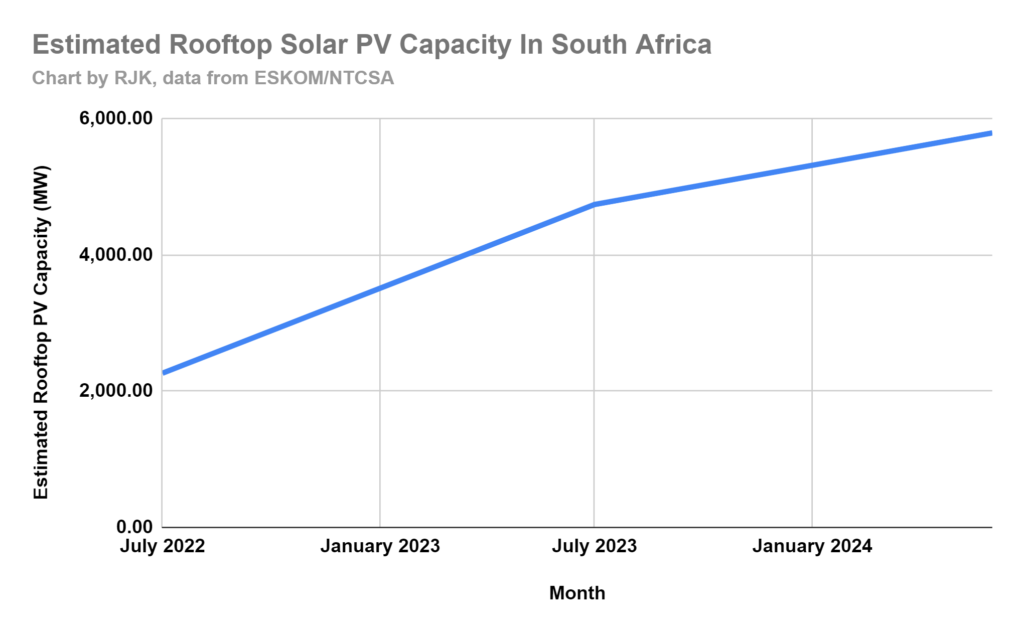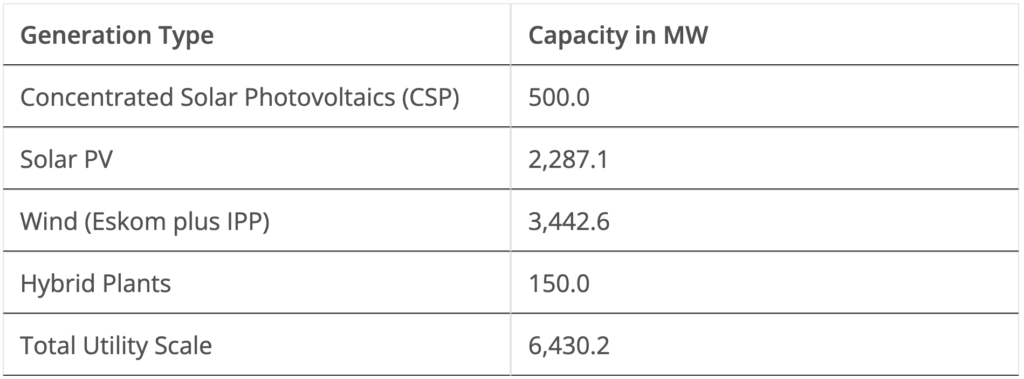South African homes and businesses have installed an impressive 3,526 MW of rooftop solar in just two years. The remarkable speed at which rooftop solar can expand electricity generation capacity is evident.
According to Eskom, South Africa’s national power utility, there were approximately 2,264.5 MW of rooftop solar PV installed in the country as of July 2022. Eskom’s latest update reveals that this figure has now soared to 5,790.5 MW.
Distributed Solar Outpaces Utility-Scale Renewables
The distributed solar sector is growing at a much faster pace than South Africa’s utility-scale renewables program.

Over a decade ago, South Africa made a strong start in utility-scale renewables with its Renewable Independent Power Producer Programme (REIPPP), designed to attract private sector investment in wind, biomass, small hydro, and other sources. REIPPP has successfully added 6,430.2 MW to South Africa’s energy mix since its inception.
Impressive Total Renewable Capacity
Eskom’s recent system status update highlights the following renewable energy installed capacity at utility-scale:
- Solar PV: 2,339 MW
- Wind: 3,562 MW
- Concentrated Solar Power (CSP): 500 MW
- Small Hydro: 29.2 MW
When combined with rooftop and other distributed solar installations, South Africa’s total installed renewable capacity now exceeds 12,221 MW! This growth in distributed solar PV, coupled with utility-scale PV, is starting to shape South Africa’s own version of the “duck curve,” a phenomenon where solar energy production peaks during the day, requiring flexible generation resources to balance the grid.

Addressing Electricity Generation Challenges
The increased generation capacity is a significant development for South Africa, helping to mitigate some of the electricity generation issues faced in the past decade.
Despite a nominal installed capacity of 54.7 GW (utility-scale only), mainly from coal, aging infrastructure has led to poor performance and the need for load shedding, a controlled power outage schedule.
Improved Energy Availability and Reduced Outages
There’s some positive news on this front. Eskom recently reported 121 consecutive days of uninterrupted power supply since March 26, 2024, including 87 days of consistent supply throughout the winter.
This suspension of load shedding has provided relief to South African homes and businesses burdened by escalating costs from using alternative energy sources like diesel generators.
On July 23, 2024, Eskom reached another milestone, achieving 35,000 MW of available capacity with an evening peak demand of 30,740 MW.
This level of capacity hasn’t been seen in six years, since July 16, 2018. This improvement is attributed to reduced unplanned outages, which have decreased to 9,238 MW. Additionally, Eskom has achieved an average Energy Availability Factor (EAF) of 70% over the past week.
Cost Savings and the Growing Impact of Rooftop Solar
Eskom’s “Generation Recovery Plan” is proving effective, resulting in a reduction of approximately R9.09 billion in Open-Cycle Gas Turbines (OCGTs) diesel expenditure from April 1, 2024, to July 25, 2024, compared to the same period last year.
While Eskom’s diesel expenses have been significant, the increasing contribution of rooftop solar to South Africa’s electricity generation mix during daytime hours offers a promising path forward.